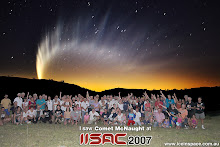

Before we have considered the subject of a painting, it;s style & the artist. In this part we will be considering the painting or artwork itself & how that may affect its future value. Firstly consider what material the painting is painted on. Is it paper, canvas, plastic or some other fabric. Some Aboriginal Art works, particularly by desert artists have been painted on some strange materials. While I suspect that in some cases this will improve their re-sale value, you also have to keep in mind how the work will last. Also what sort of paint etc has been used. Again - that can be interesting.
Many paintings, particularly designed for the export market are painted on un-stretched or partly stretched fabric. These need to be properly framed & sometimes that can be expensive & occasionally not possible to be framed properly. (If this is the case the canvas may be put behind glass & may be an uneven size - which can make it interesting!) If the painting is not going behind glass it should be sealed with a quality sealant. Unfortunately many Aboriginal artists fail to do this. Clear sealant can be purchased for any quality art supply store & is easy to do yourself - a soft brush is preferable. Apart from protecting the painting, a sealer makes it possible to clean the painting with a damp cloth if it gets dusty or dirty & also keeps the colours nice & bright. Sealers are available in matte, semi-gloss or full-gloss. In most cases I would recommend a semi-gloss, but any good art shop will advise. The worst thing I have heard of is t the rumour that went around a few artists that hairspray was a cheap sealer. While it works in the short time I'm told it is extremely harmful in the long term.
When deciding how much money to spend on a work remember the cost of framing if needed. Any work, if bought unframed should be professionally framed with 1 - 3 mattes. Perhaps try several colour options before deciding. Ochre colour mattes often work the best. Many of the works in my store are already framed. Horses in Kelp is an example of a painting professionally framed with 3 mattes all done in traditional Aboriginal colours. The professional framing of Horses in Kelp adds considerable beauty & value to a simple, but traditional & meaningful painting. Rosetta Dreaming is painted on a framed canvas & has been sealed properly by the artist. It is ready to hang as it is. Details of both paintings are available at http://www.aboriginalarttreasures.com/paintings





